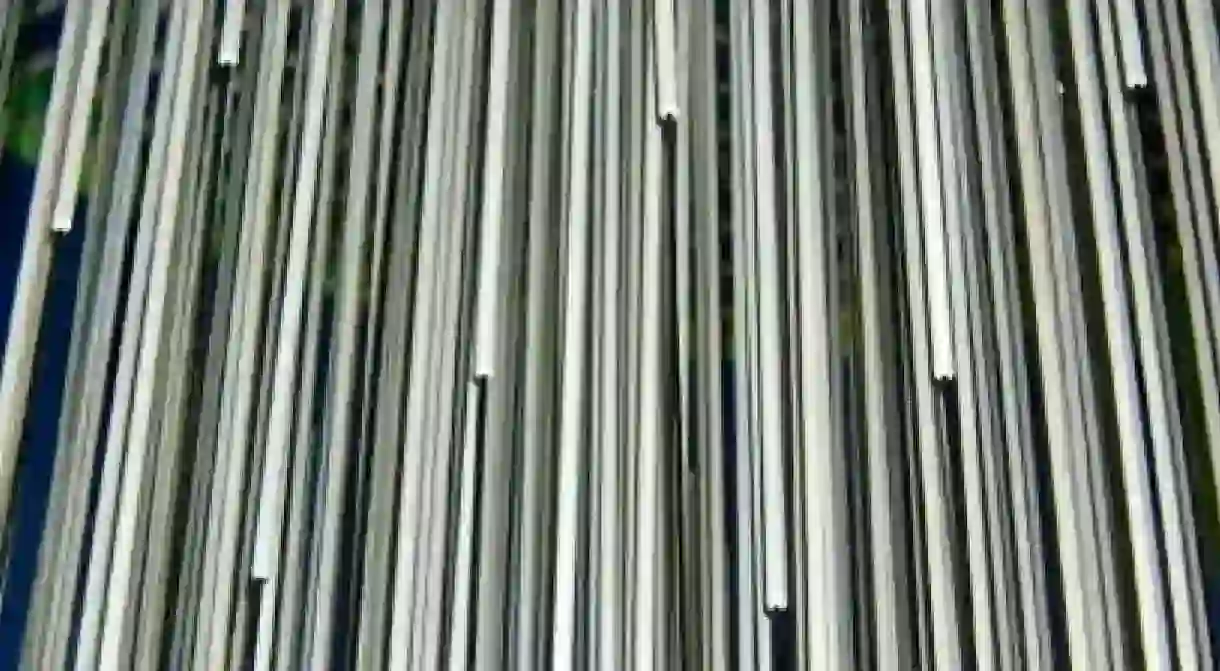Art in Motion | Five Things You Should Know About Jesús Rafael Soto

Jesús Rafael Soto was one of the most important figures in kinetic art in the 20th century. Kinetic art is about depicting motion, real or imagined: from abstract grids sketched to trick the eye into seeing three-dimensions to the perpetual movement of a mobile suspended from a ceiling. Here are five facts about what moved the Venezuelan at the forefront of exploring dynamism in art.

Poster Boy
Soto received his first commissions as a teen in his native Ciudad Bolívar, in the tropical southeast of Venezuela. At 16 he began making posters for the three theaters in town, claiming he ‘could do as many as 50 a day.’ Today the city is known for the Jesús Soto Museum of Modern Art, featuring his works and others from his private collection.
The Musician
As a young artist, Soto spent years supporting himself with his guitar, playing at bars and nightclubs. His love of music transcends his art, which uses colors, lines and three-dimensional shapes as a code to explore repetition, patterns and “optical vibration”: vibration that is not heard as sound but seen, like ripples on water.

Paris
In 1950, Soto moved to Paris on a six-month scholarship sponsored by the Venezuelan Government. He stayed for the next decade, playing his guitar by night, to earn money, and painting by day. During this time he joined the artistic group Zero, comprised of artists from Europe, Asia and the Americas who experimented with Minimalism, earthworks and conceptual pieces aimed at exploring the post-World War II world. Soto would go on to spend much of his life in Paris, including his final years.
The Picasso Prize
In 1981 Soto won the UNESCO Picasso Medal, just six years after the prize was created, for his work in “optical vibration” and kinetic art. The Picasso Medal is awarded every year to musicians, artists or institutions that have contributed to developing and enhancing music internationally, and the diversity of musical representation, through their work. Soto would go on to win the award again in 1990.

The Floating Egg
Soto’s very last work, Houston Penetrable, was not finished by his hand, but rather by assistants from his studio after he died in 2005. They used his design to create the interactive, eight-ton hanging piece: 24,000 clear PVC strands, hand-painted yellow in parts, to create a three-dimensional oval that appears to be floating in mid air. By Alexandra Baumhardt













